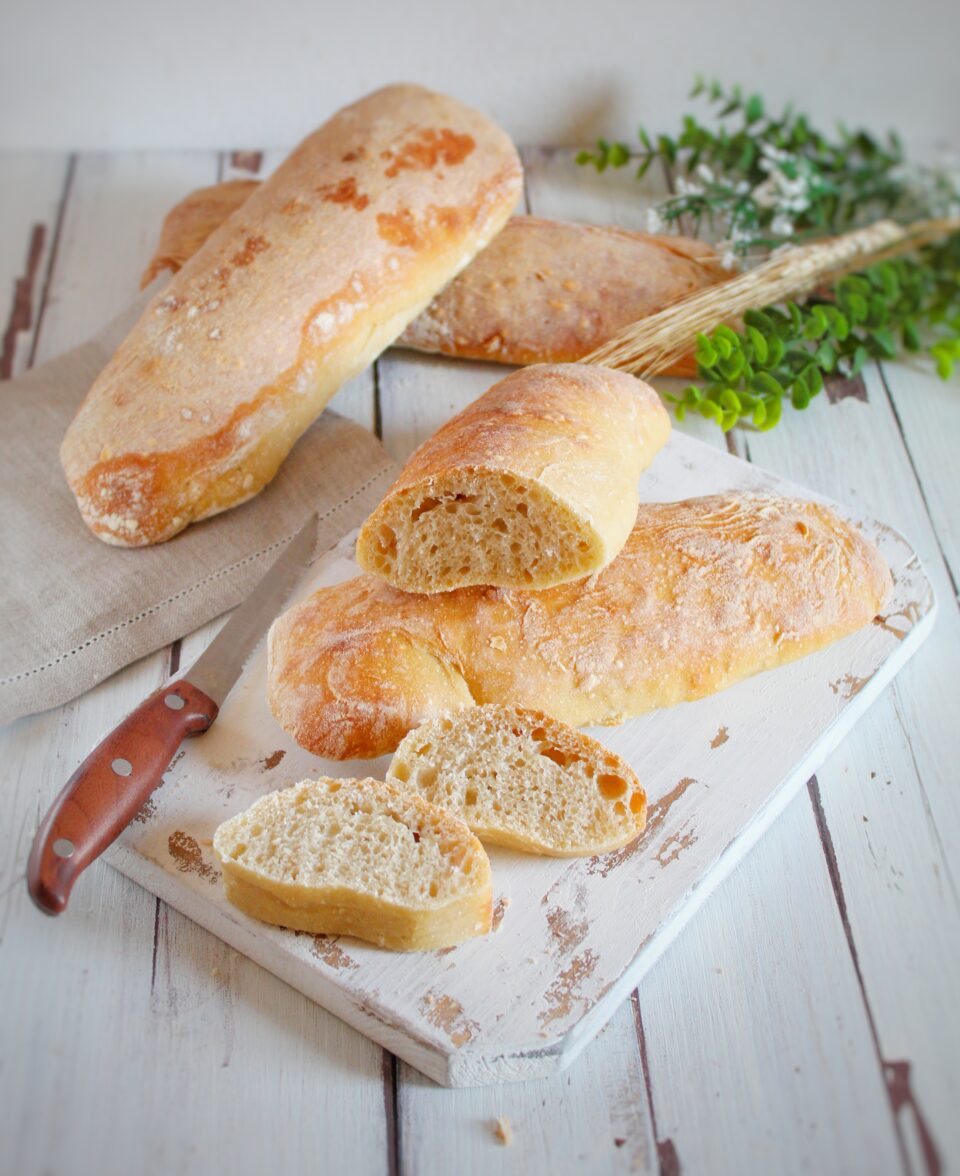Do You know Julia Child? I bet you do! She’s of course quite famous in the US, she is often considered the woman who brought the French cuisine on the other side of the pond. But she’s famous in Italy too, mostly thanks to the successful movie starred by Meryl Streep.
Julia is not just an everyday cook. She mastered the art of cooking quite thoroughly, as she had learned the ropes at the famous Cordon Bleu cooking school in Paris, and then continued with private lessons.
I am completely fascinated by her, because I feel quite close to her to some extent. I often mention her on the blog, and I certainly will time and again. Sometimes clumsy and awkward, but with a neophyte passion that she never lost.
I do feel like her when I talk about my baking experiments, and even more so when I prepared these lovely sourdough Ciabatte bread, a recipe from Sara Papa’s books. I made any possible disaster! But as they came out of the oven, they were so good that I forgot all the trouble I went through.
Ciabatta means slipper in Italian, and the shape of this bread is quite like that, don’t you think?
The preparation is, I admit, quite lengthy. I am suggesting also the use of the brewer’s yeast to shorten the rising time of the dough. However, sourdough bread is something different, and needs to be tasted!
Ingredients
For the poolish
300 gr baking flour
300 gr water
95 gr sourdough (or 8 grams of brewer’s yeast)
For the dough
600 gr baking flour
375 gr water
113 gr sourdough (or 9 gr of brewer’s yeast)
9 gr malt
10 gr salt (I don’t like it excessively salty, you can add some 5 gr if you want more flavour)
Extra virgin olive oil
Durum wheat flour (for dusting)
Procedure:
Start by preparing the polish: in a bowl soften the sourdough with the water (at room temperature, not cold or warm). Then add the flour (sift it first!) and knead it gently trying to avoid lumps. Let it raise for two hours at room temperature, covered with cling film.
Then pass to the dough: take another bowl, or the one of the kneading machine if you have one (I do recommend it!), and put in it the flour, the malt, and the salt. Give it a little whisk, then add the water with the sourdough dissolved in it, and then the polish.
Start kneading from ten to fifteen minutes. Dust your hands with flour, if you knead by hand. Remember that the dough will be quite soft and sticky. It’s quite annoying, but it has to be. Not annoying – sticky!
When it looks silky, pur it into a well-oiled bowl, cover it with cling film and let it rise for one hour.
Then put the dough onto the working table, pre dust it before with durum wheat flour.
Cut your ciabatte from the dough, each piece should be approximately 5 x cm centimetres. Dust the surface of each ciabatta with durum wheat, flatten them slightly with your fingertips and place them on a baking tray, already covered with parchment paper.
Let them rise until they double in volume two or three hours should ne enough, it depends on the temperature of your kitchen. To avoid that annoying little crust, cover them with a canvas when they rise, so to keep them moist.
Then preheat the oven at 220 degrees and bake them for 20 minutes.
Before putting the ciabatte into the oven, put on the bottom of it a small pan (it must be oven-proof) with a bit of water, so to create the steam into the oven.
Let them cool on a grid.


